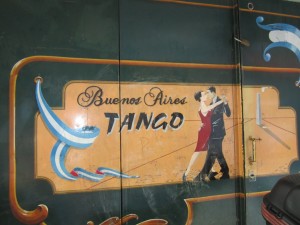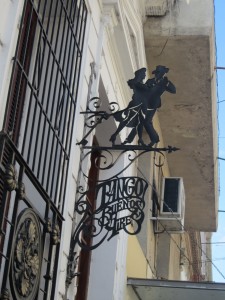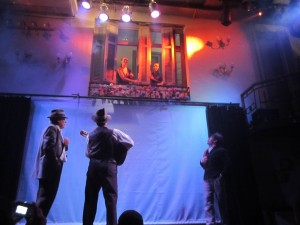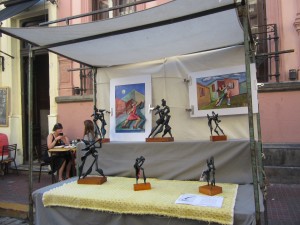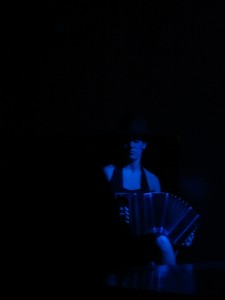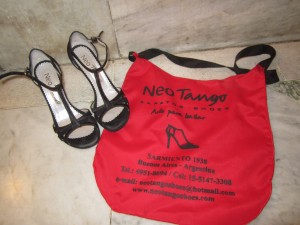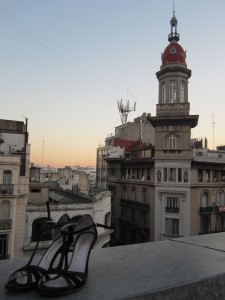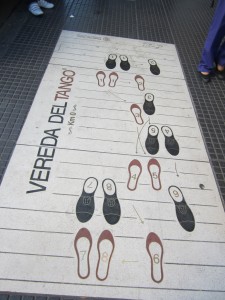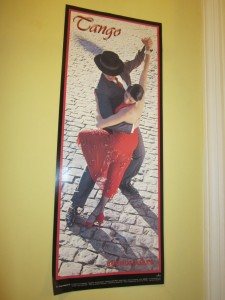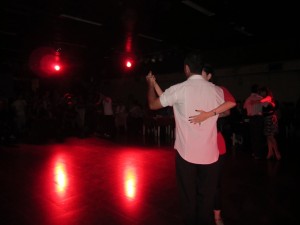As Lewis the Lion discovered more about the city of Buenos Aires, the word “tango” seemed to permeate the air around him. From street signs to tango clubs, from music shops blaring out tango music to newspaper stands with tango postcards and posters. The word “tango” seemed to be on everyone’s lips!
But Lewis the Lion wanted to discover exactly: “What is tango?”
As we know Lewis the Lion is a curious cat and loves learning new things so he was delighted that on his very first night in Buenos Aires, Helen attended a special tango evening where she learnt to dance with some of her friends some of the basic tango steps and then watched a tango show which explained the history of tango dancing.
Here are some of the clips that Helen filmed of the professional tango dancers – tangueros – on the night.
* Tango Show: this shows some of the origins of the dance
*Tango Show 2: this shows the passion of the dance.
The tango is a partner and social dance that has its influences in European and African culture. Some of its moves come from certain slave ceremonies. However the tango developed in the lower-class districts of Buenos Aires and Montevideo at the end of the 19th Century e.g. in the area of San Telmo where there were many immigrants from Spain, Italy and France. It therefore was a fusion of musical and dance styles such as the polka, flamenco, habanera and milonga.
It soon spread and became a popular dance even among the middle-classes and in the early years of the 20th Century became a craze that swept across the capital cities of Europe, noteably Paris, London and Berlin.
Tango music also played a popular part of the rhythm of the dance with composers like Carlos Gardel and Astor Piazzolla being important in its development.
Can you find out some more information about these composers?
The main instruments that play the tango music are an accordion, a bandoneon, piano, guitar, violin, double bass and singing. Here is a clip of tango musicians for you. Often the songs sound melonchonic and sad.
Helen, who has always loved dancing, told Lewis the Lion that learning how to tango was unlike any dance that she had ever learnt before. Although she told Lewis that she had really caught the tango bug in Buenos Aires and even bought herself a special pair of tango shoes! Here is a photo of them with the special bag and also with them on the rooftop.
Helen also quickly realised that you can’t wear tango shoes outdoors – they are only meant for dancing in the tango club if you want to keep the soles in good condition for all those flicks!
Even though there are some basic steps to learn, such as the seven steps shown here (a mixture of short and gliding steps, and steps that cross over),
the real essence of the tango is to walk with your partner and respond to them; it’s not so much about the steps themselves. That’s why when watching tango dancers, no two partners will ever dance the same steps.
Helen told Lewis that it would probably take a long time to dance this dance to any level of proficiency but nonetheless, much fun was had with her friends at different dance classes and milongas across Buenos Aires.
(A milonga is a place where people come together to dance the tango. However, it also the name of a type of dance itself. The milonga dance is a bit like tango but is danced more quickly and has six basic steps as opposed to seven as seen in this milonga in San Telmo).
Some of Lewis’ favourite milongas took place in the following venues:
*La Viruta club where not only could you have tango lessons but also salsa, milonga and rock and roll! What was brilliant about this place was that there were classes for all levels but before the classes, the teachers always gave a special performance as you can see in this clip.
*La Glorieta was an outdoor bandstand where people gathered in the park under the fairy-lights to dance the night away: an enchanting evening was spent by Lewis the Lion in the park watching all the dancers twirl around!
*Plaza Dorrego in San Telmo: where the origins of tango developed. Again in the open-air where tango, milonga and folk dances were shared under the stars and fairy-lights.: magical!
*La Cochabamba in San Telmo was a place where it seemed like you had stepped back in time to the 1940s. During the milonga two girls were celebrating their birthdays and they got to dance with lots of different partners who cut in on each other to dance with the ladies! One of the girls even sang a couple of emotive tango songs while her friend played the piano. What a wonderful evening full of surprises!
Would you like to learn to dance the tango? Why or why not?
What is your favourite type of dancing?

